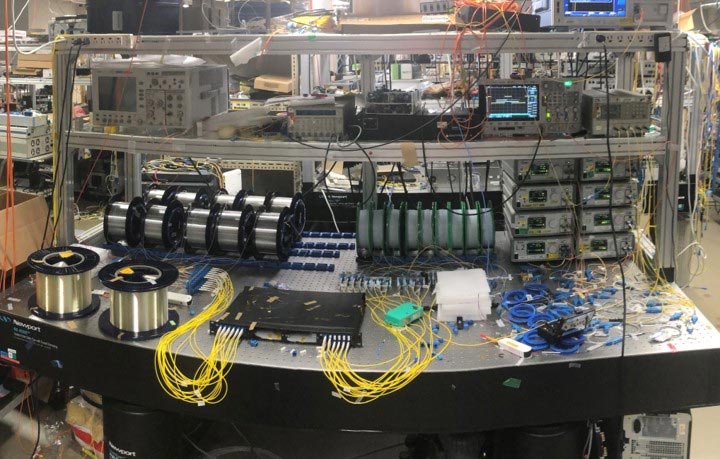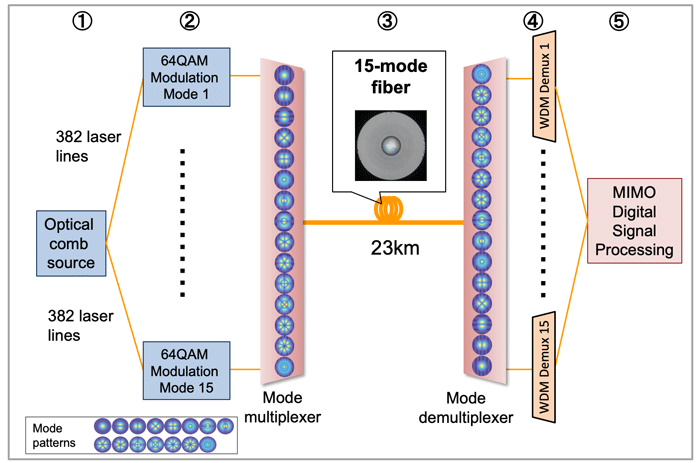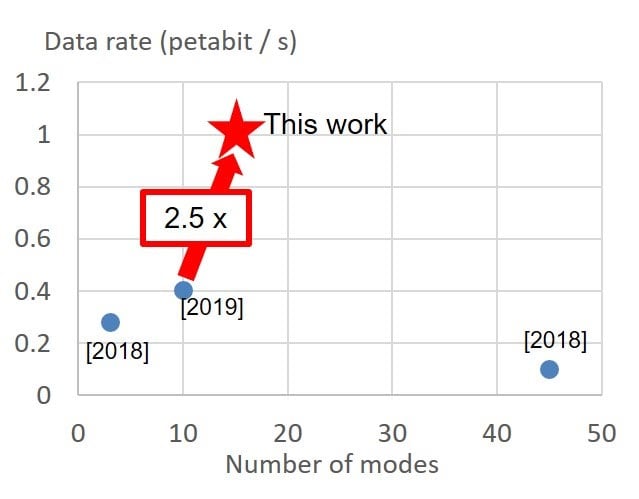
The need for high bandwidth network infrastructure is constantly growing, as is the volume of data consumed / generated by humanity. Technologies do not stand still, developers develop existing achievements, plus create something new.
Japanese scientists from the Network Systems Research Institute of the National Institute of Information and Communication Technology (NICT) in Japan were able to transmit data over one multimode fiber at a speed of 1 Pbit / s. The length of the line was 23 km, and for the experiment, the developers used 15-mode fiber with multiplexers for waveform multiplexing.
Multiplexers are of a new type , their operation is based on a multi-plane light conversion process: 15 input signals are repeatedly reflected from the phase plate. This is necessary to match the transmission modes of the corresponding fiber.

The fiber in question is from Prysmian and the multiplexers are from Bell Labs. For the experiment, the Japanese have created a broadband transceiver that can process several hundred WDM channels simultaneously, providing a consistently high signal quality.
In conventional multimode fiber, as the number of modes increases, the modal delay begins to increase due to the high processing load. By creating the new fiber, scientists have minimized this problem. During the experiment, it was possible to demonstrate the transmission of 382 channels with 64-QAM modulation.

In general, existing technologies for creating multimode fibers were used in the manufacture of optical fibers. The system has also been optimized for broadband operation.
The achieved result of 1 Pbit / s exceeded the previous records by 2.5 times.
Of course, a record set in a laboratory setting is not all. Now scientists have a lot of work to do to commercialize the technology. To start mass production, it must be inexpensive and easily scalable.

By the way, last year NICT already reached a data transfer rate of 1 Pbit / s, but then this was achieved thanks to a whole fiber-optic cluster, the basis of which is 22 fibers and a MEMS signal controller with a multiplexing system for three-core and seven-core connections.

Each of the cores in the previous experiment provided a bandwidth of 245 Gbps. Together, this gave 1 Pbit / s. During last year's experiment, 202 different wavelengths were used simultaneously.
All this is interesting, but I would like the technology to find practical application in the near future, and not remain as an abstract laboratory result.
